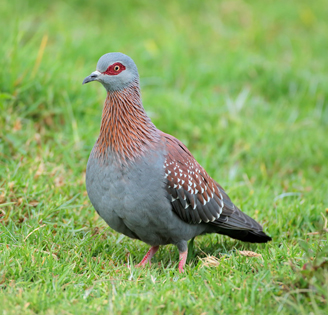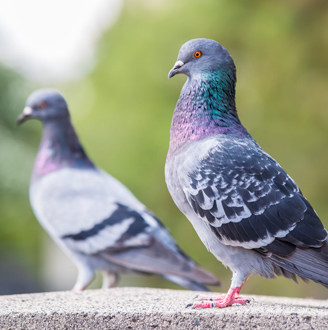
Stefan’s fine feathered friends
Racing pigeons aren't just pigeons who know how to find their way home. There is much more to this sport than meets the eye.
Stefan Siebert and his son, Johan, share their love for racing pigeons.
SCROLL DOWN
Prof Stefan Siebert, subject group chairperson of Botany on the Potchefstroom Campus, says that the pigeons have to be trained, need to follow a special diet before races, and sometimes get lost and disappear. It is not a cheap hobby either. Medication is expensive and some of the world’s top racing pigeons cost up to R100 000 each.
Even so, when the pigeon racing bug bites, it bites deep, Stefan says.
He shares this passion with his son, Johan (10), and together they have won a number of races for their club, Mooirivier Racing Pigeon Club. “Our pigeons fly in the Western Racing Pigeon Union, which includes clubs in Potchefstroom, Klerksdorp, Bothaville, Fochville, Viljoenskroon and Wesselsbron.”
Pigeons fly home to roost
Stefan explains that a young pigeon of about 30 days old begins training by sitting around his immediate environment to memorise the location of his loft. “It takes around three days for the pigeon to orient himself. Then he begins flying up, and gradually flies further and further away from the loft. The pigeon has then been 'homed'."
This happens instinctively, and later they learn to fly with the older pigeons – these flocks can often be seen circling above the town. “As soon as the younger pigeons are fit, I can take them on the road. I prefer to start at 5 km and gradually increase it to 80 km. If the pigeon is home before me, I take them further away.
“Some get lost, but return home as soon as they remember the way. That is unless a hawk, cat or air rifle gets to them first.”
The finish line
Pigeons must also learn to enter and leave the loft; otherwise they sit outside all day after a race, says Stefan. “I lure them with food: I whistle or call and after two minutes I close the trapdoor and only reward those already inside. They soon learn that those who enter as soon as they arrive receive treats.”
Each pigeon has an electronic ring around its foot which registers on a clock. The clock is placed by the loft, and the time is registered as soon as the pigeon arrives. The speed of each pigeon is then calculated and the outcome of the race depends on which pigeon has the best time over the distance. A winning speed on a clear day with the wind from behind is about 100 km/h.
Stefan says it costs him about R3 500 per year to participate in 36 races. This includes transport in a specially adapted truck belonging to the club, as well as care during the trip.
He has had to fetch his pigeons in Vereeniging when some of his young racers have crossed paths with pigeons flying to Gauteng. Fortunately, the pigeons are ringed and pigeon racers can contact one another.
Friendly rivalry
There is a friendly competition between Stefan and his son to see whose pigeon arrives home first. Johan has 20 pigeons (dad has 100) and can only enter two or three each week. However, he has recently been enjoying a slight lead over his dad as one of his pigeons recently came in third out of 600 pigeons in the entire union.
“I enjoy being able to share this passion with my son. I don't think many fathers have the privilege.”


Stefan says that racing pigeons are predominantly European rock pigeons (Columbia liva - above) that belong to the same genus as the rock pigeon from sub-Saharan Africa (Columba guinea - below).
